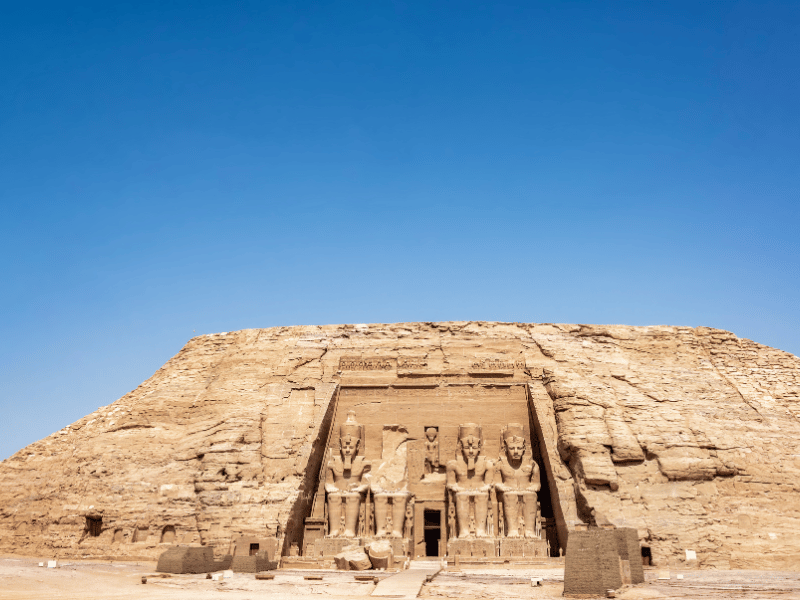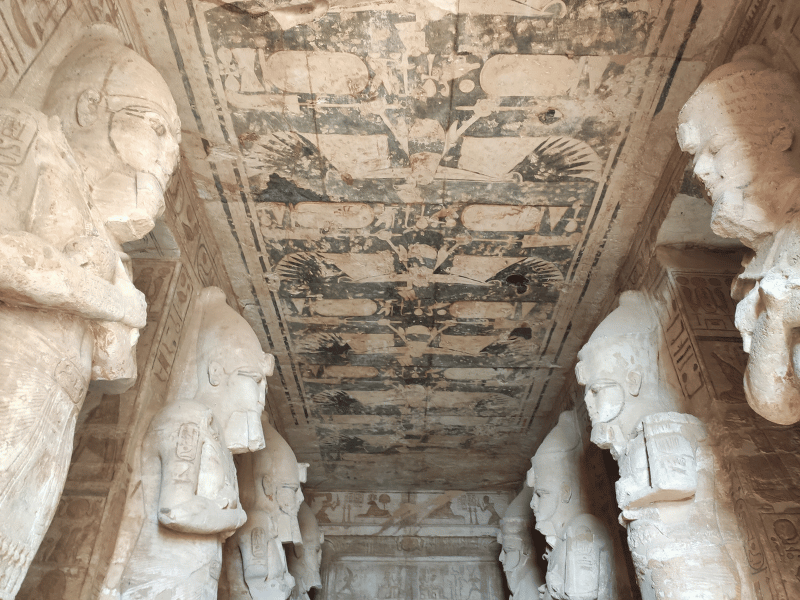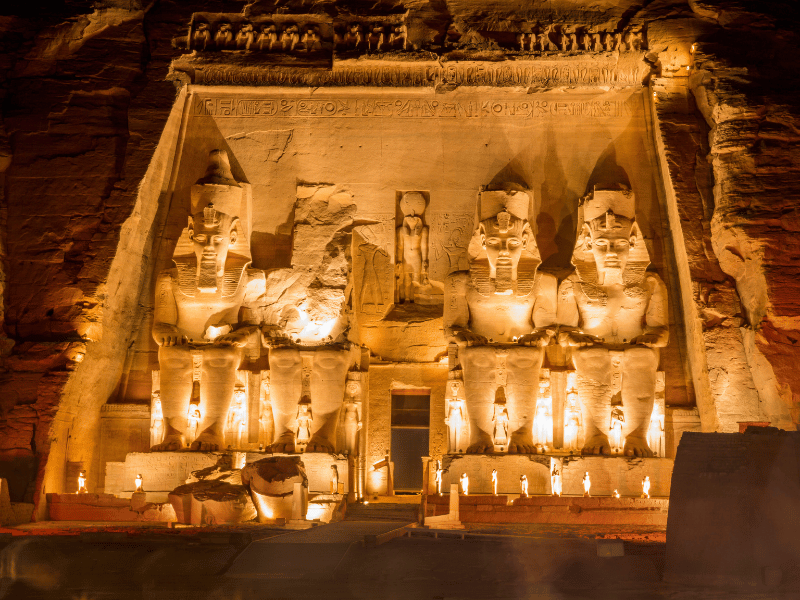Introduction
Abu Simbel Temple is one of the most impressive sites of ancient Egypt located in Aswan, Egypt. Crafted out of rock during the reign of the powerful Pharaoh Ramesses II, this colossal structure served as a monument to Ramesses’ glory and a symbolic reminder of his magnificence.
- Place: Abu Simbel Temple
- Country: Egypt
- Governorate: Aswan Governorate, Egypt
- Age: Approximately 3,200 years old
- Population: Tourist site with no permanent residents
- Discovered by: Rediscovered in 1813 by Swiss orientalist Jean-Louis Burckhardt. Systematic archaeological excavations were later carried out by Italian archaeologist Alessandro Barsanti
- Famous for: The impressive architecture of the temple complex of Abu Simbel and its iconic facade with massive stone sculptures of Ramses II.
- Nearby locations: Philae Temple, Kalabsha Temple, and the Aswan High Dam.
A Temple Complex Fit for a King
Carved into a sandstone cliff overlooking Lake Nasser, the temple complex of Abu Simbel is a breathtaking sight to behold. The four prominently displayed colossal figures seated in front depict Ramesses II. Two smaller statues represent his royal wife Queen Nefertari and two sons.






The Grand Interior
Upon entering through the gargantuan façade into the inner halls of the Great Temple, one senses a stillness. Here, the imposing statues of Ramesses stand guard in the columns. Majestic seated figures of the king and the main gods Ra-Horakhty, Amun and Ptah sit in the sanctuary carved deep inside the mountain.
Engineering Marvel of Relocation
To protect the site from being submerged by the rising waters of Lake Nasser after the construction of the Aswan High Dam, a mammoth effort was undertaken between 1964–1968 to rescue Abu Simbel. With precise planning and execution, the temples were dissembled slice by slice and re-erected in a new location, nearly 64 meters higher and 200 meters back from the original site.
Ongoing Archaeological Treasures
Excavation work continues to unearth more archaeological revelations at Abu Simbel. In recent years, remains of a fortress and a small medieval church situated near the temples have been brought to light. Such discoveries enhance our understanding of how this site was occupied and venerated across different periods of history.
Long Shadow of Power and Legacy
Standing tall amidst the desert landscape for over three millennia, Abu Simbel Temple is a majestic monument to the once-mighty power and grandeur of ancient Egypt under Ramesses II. Its awe-inspiring dimensions and delicate craftmanship have cemented its place as one of Egypt’s most famous archaeological sites and an enduring symbol of Egypt’s rich and complex past.



